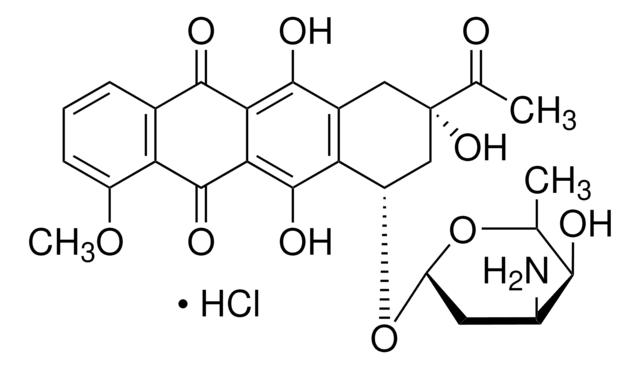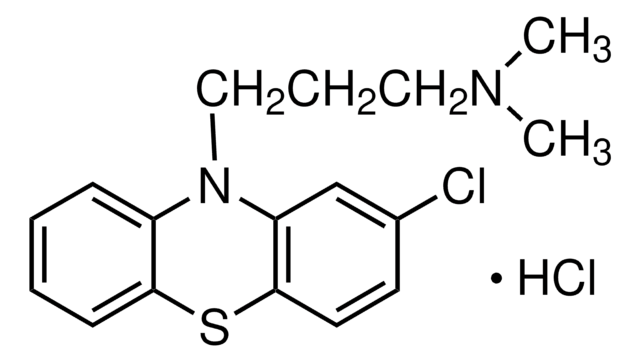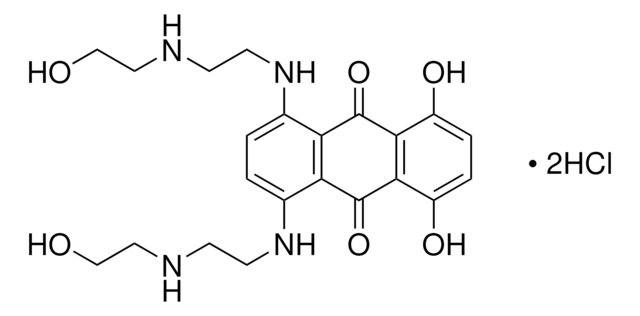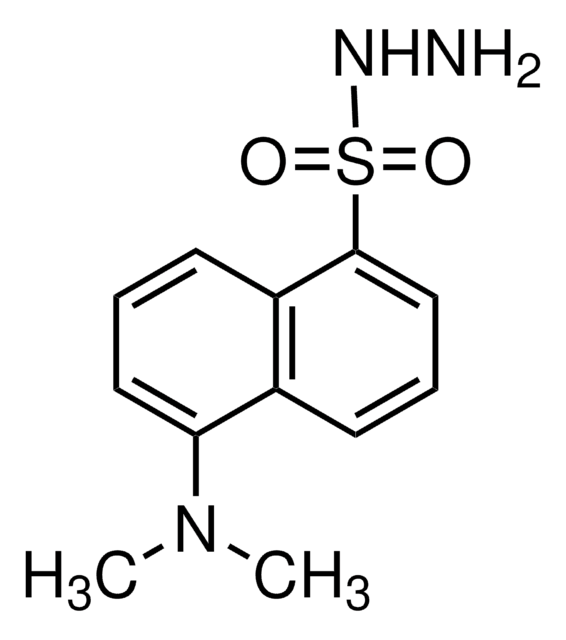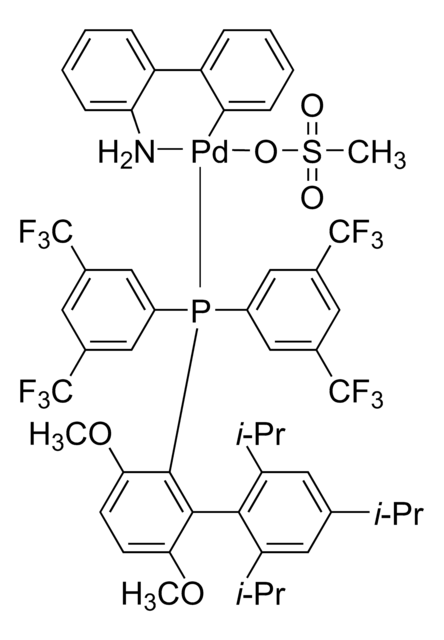251800
Daunorubicin, Hydrochloride
Potent cell-permeable anticancer agent whose potential target site may be mitochondrial cytochrome c oxidase.
Synonym(s):
Daunorubicin, Hydrochloride, Daunomycin, HCl
About This Item
Recommended Products
Quality Level
form
crystalline solid
potency
≥840 g/kg
manufacturer/tradename
Calbiochem®
storage condition
OK to freeze
desiccated (hygroscopic)
color
red
solubility
aqueous buffer: soluble
methanol: soluble
water: soluble
shipped in
ambient
storage temp.
10-30°C
InChI
1S/C27H29NO10.ClH/c1-10-22(30)14(28)7-17(37-10)38-16-9-27(35,11(2)29)8-13-19(16)26(34)21-20(24(13)32)23(31)12-5-4-6-15(36-3)18(12)25(21)33;/h4-6,10,14,16-17,22,30,32,34-35H,7-9,28H2,1-3H3;1H/t10-,14-,16-,17-,22+,27-;/m0./s1
InChI key
GUGHGUXZJWAIAS-QQYBVWGSSA-N
General description
Biochem/physiol Actions
DNA synthesis, RNA synthesis
Warning
Reconstitution
Other Notes
Papadopoulou, L.C., and Tsiftsoglou, A.S. 1993. Cancer Res. 53, 1072.
Skladanowski, A., and Konopa, J. 1993. Biochem. Pharmacol.46, 375.
Wolff, M., and Jelkmann, W. 1993. Ann. Hematol. 66, 27.
Bellec, F., et al. 1992. Flow Cytometry 13, 880.
Legal Information
Signal Word
Danger
Hazard Statements
Precautionary Statements
Hazard Classifications
Acute Tox. 3 Oral - Carc. 2 - Muta. 2 - Repr. 1B
Storage Class Code
6.1C - Combustible acute toxic Cat.3 / toxic compounds or compounds which causing chronic effects
WGK
WGK 3
Regulatory Listings
Regulatory Listings are mainly provided for chemical products. Only limited information can be provided here for non-chemical products. No entry means none of the components are listed. It is the user’s obligation to ensure the safe and legal use of the product.
JAN Code
251800-100MG:
251800-MG:
251800-1GM:
251800-0MG:
251800-5MG:
Certificates of Analysis (COA)
Search for Certificates of Analysis (COA) by entering the products Lot/Batch Number. Lot and Batch Numbers can be found on a product’s label following the words ‘Lot’ or ‘Batch’.
Already Own This Product?
Find documentation for the products that you have recently purchased in the Document Library.
Customers Also Viewed
Our team of scientists has experience in all areas of research including Life Science, Material Science, Chemical Synthesis, Chromatography, Analytical and many others.
Contact Technical Service